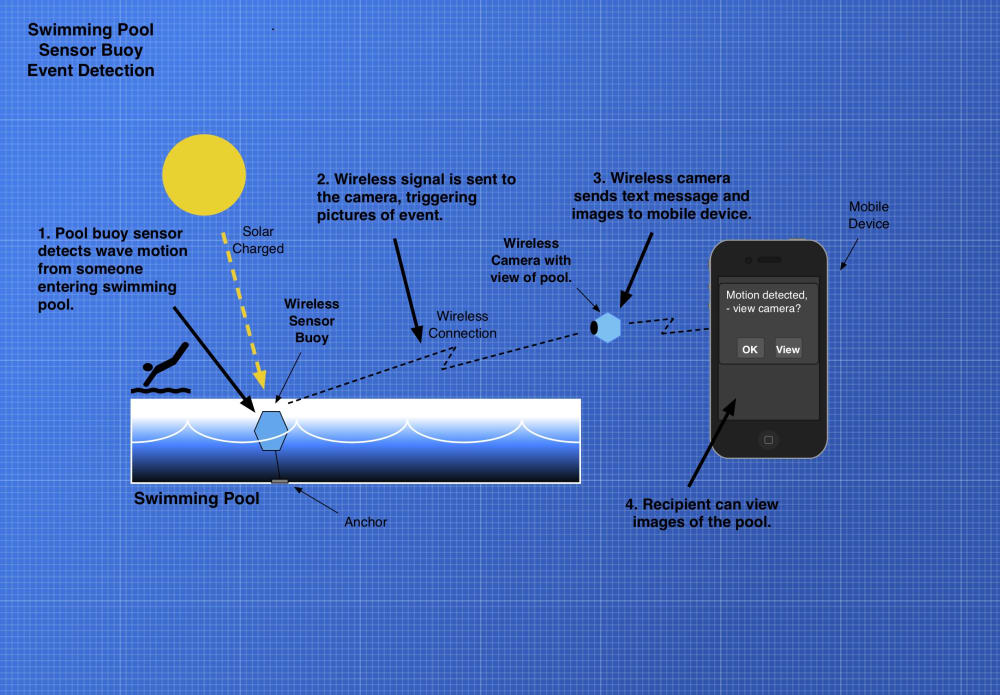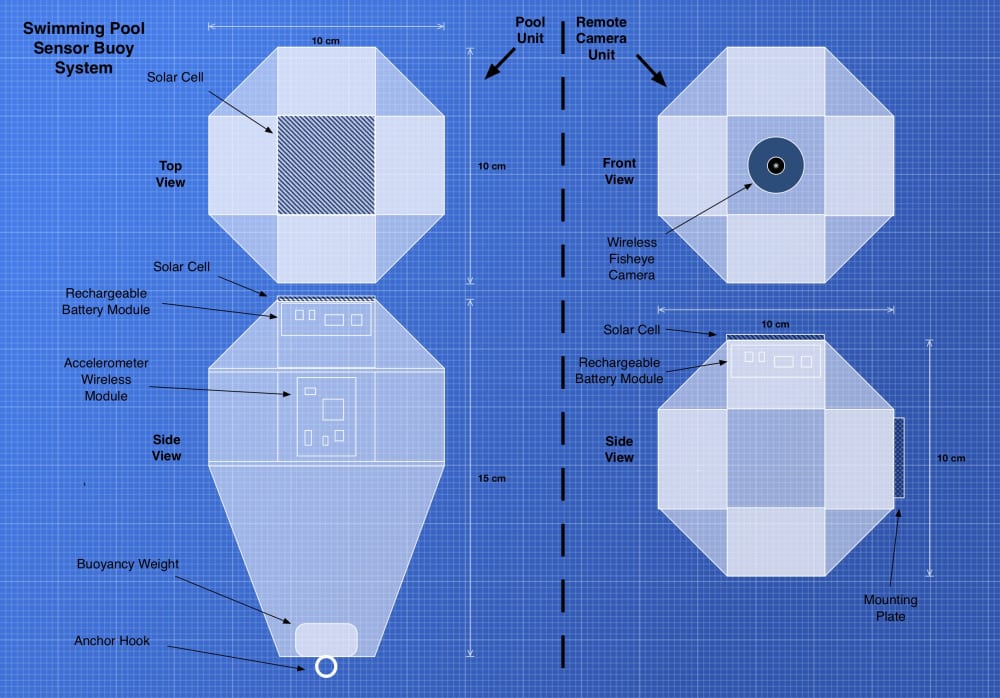
Background: Swimming pool drownings are one of the most feared threats to our children. Globally, the highest drowning rates are among children 1–4 years, followed by children 5–9 years of age. Eighty-seven percent of drowning fatalities happen in home pools and spas for children under five. Regardless of the statistics, pool drownings are a threat to all ages.
Problem: Even though many pool owners mitigate the risk with the use of fences and covers, pool safety devices are expensive and cumbersome to maintain. These products are susceptible to outdoor conditions, causing failures.
Solution: The Pool Sensor Buoy is an inexpensive, easy to use device. Based on IoT sensor technology, it utilizes a wireless sensor and remote camera to monitor a swimming pool. When water motion is detected, a text message alert is sent to the user’s mobile device, presenting images of the pool. The buoy is anchored to prevent getting caught in the skimmer or clinging to the edges.
How it works: The system consists of two units, the buoy and a remote wireless camera. The watertight buoy contains a wireless connected accelerometer. The camera is pre-configured to receive a signal from the buoy. Both the buoy and the camera are powered by rechargeable batteries and charged by solar cells. The camera unit connects to a mobile device or wifi router, and mounted with a view of the pool.
The buoy’s accelerometer is programmed using an algorithm that detects wave motion. When the motion reaches a threshold, a signal is sent to the camera module and takes three, low-rez images of the pool. The camera module then sends a message to the user's mobile device, prompting an alert window allowing the user to view the images. Additionally, the user can activate a live video stream, or trigger additional images to view. Using low-rez images allows for low bandwidth transmission providing fast acquisition and notification.
The firmware is based on embedded, open-source technology and can be updated and modified by hobbiest or professional developers. This model leverages the open-source community to peer-review code and improve detection accuracy. Firmware updates can be provisioned over the Internet or by a USB connected computer.
Production: The primary goal of this technology is to provide inexpensive, life-saving capabilities to pool owners. Using inexpensive components, the system can be mass produced and distributed to online and brick-and-mortar retailers. The units can be fabricated, assembled, and mass-produced by boutique PCB manufacturers.
Product Growth: The buoy’s accelerometer data can be collected by a cloud-based system to improve detection accuracy and facilitate product development. It can also be distributed by pool safety programs or as a marketing tool for the industry.
Conclusion: Availability of the system is key to saving lives. Providing an inexpensive solution makes it an affordable tool for pool safety. The product can influence awareness and act as a platform to disseminate pool safety information. With the ingenuity of consumers, this product can provide a foundation for others to build a safer awareness of pool safety.
-
Awards
-
 2021 Top 100 Entries
2021 Top 100 Entries
Like this entry?
-
About the Entrant
- Name:Vincent Maes
- Type of entry:individual
- Patent status:none





